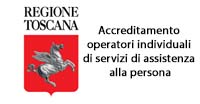The History
The Name
Pitigliano is situated 313 metres above sea level on a fascinating and beautiful tuff promontory, bounded by green valleys through which the Lente and Meleta Rivers flow.
The Etruscan name is not known: perhaps it was derived from Statnes (or Staties) which in Roman times became Prefecture, and was later called Statonia.
The name Pitigliano however, would seem to have been derived from Petilia, an important Roman family who gave their own name to various places. According to an ancient legend, the town was founded by two Romans: Petilio and Celiano: the name of Pitigliano would have been derived by the combination of their names.
The History
2300-1000 B.C., Documents show that a village from the Bronze Age existed there, but the cliff of Pitigliano, like the rest of the Fiora valley was habitually occupied from Neolithic times (VI millennium B.C.) and thereafter, during the Copper Age.
VIII century B.C., An Etruscan community reached its height in the VI century, because of the vicinity of Veio, substituting the nearby centre of Poggio Buco on the Fiora, where the ruins of necropolis and the remains of a temple were rediscovered: around 500 B.C., they were probably destroyed by Porsenna, the King of Chiusi.
I century B.C. – II A.D., The Roman presence, with farms and villages on the main roads, show several attempts to build on the plateau in front of the cliff of Pitigliano.
1061 - Was the first time that the historic name of Pitigliano appeared on a Nicolas II canonical note of Sovana.
1188 - In another document, after the year 1000, Pitigliano appears as a walled (a fortified village) owned by the Aldobrandeschi counts, to whom it belonged, as rulers of the Maremma.
1274 - Pitigliano was one of the major fortified counties of the Aldrobrandeschi in the wars with the Commune of Orvieto.
1313 - The Orsini, through a marriage between the Aldobrandeschi in the County of Sovana, succeeded them, and were forced into long battles with, first, the Commune of Orvieto and then with Siena. After the conquest of the latter, and nearly all of the Maremma, including Sovana in 1410, the Orsini moved the County capital to Pitigliano.
1466, the small Ursinea County gained ground with the growing power of Niccolo III, a Captain of fortune in the service of the most important Italian States: with him, Pitigliano was enriched with renaissance monuments, amongst whom were artists such as Antonio da Sangallo, Baldassare Peruzzi and Anton Maria Lari.
1604, Ferdinando I, Grand Duke of Tuscany, acquired all the Orsini possessions. This was the end of the County of Pitigliano: from the middle of the century there was an increase in the number of Jewish people, who found it a secure refuge. In 1643, the Medici thwarted an attempted occupation by Pontifical troops.
1843 - Pitigliano again acquired the title of city, with the transfer of the Diocese of Sovana, owing to the increase in economic growth, followed by enlightened reforms.
Translation by Carreen Conlan - carreen@alice.it






 Sistema per ricevere chiamate vocali, sms ed email newsletter dal comune in caso di: allerta meteo, news dal territorio, variazioni su servizi
Sistema per ricevere chiamate vocali, sms ed email newsletter dal comune in caso di: allerta meteo, news dal territorio, variazioni su servizi


 Servizio mensa scolastica
Servizio mensa scolastica



